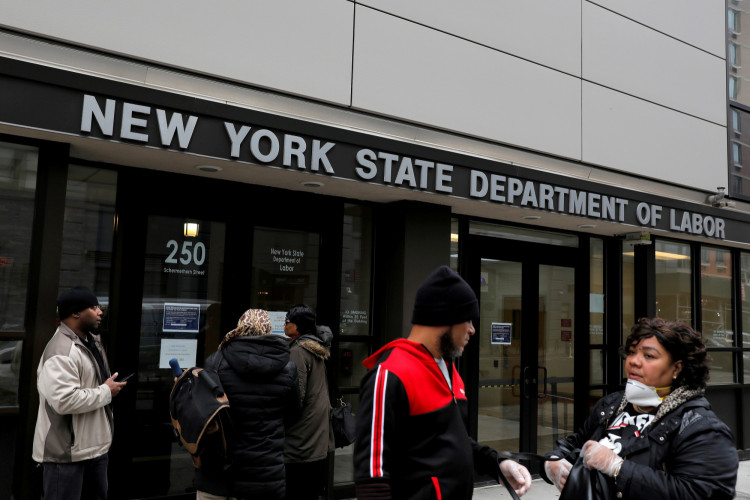The number of Americans filing for unemployment benefits decreased to 787,000 in the week ended Dec. 26 - moving away from a three-month high of 892,000 hit in the week ended Dec. 12, the U.S. Department of Labor says.
"Still, claims remained well above the 200,000 level reported in February and will likely remain elevated for some time as the pandemic is far from controlled although vaccination has already started," the department said.
On a nonseasonally adjusted basis, the number of claims was down to 841,000 compared with 873,000 in the previous week, the data showed. Also, about 308,000 people applied for help from the Pandemic Unemployment Assistance scheme - which covers workers that don't qualify for initial claims. This was compared with 397,000 in the previous period.
As of Dec. 19, the number of people continuing to draw benefits under regular state unemployment insurance programs declined to 5.219 million - the lowest since April - from 5.322 million the week before.
The report also showed that as of mid-December, more than 19.5 million people were receiving some form of jobless aid, including from emergency measures recently extended by the latest coronavirus aid bill.
Though initial jobless claims have dropped from a record 6.867 million in March, they have held persistently above their 665,000 peak hit during the Great Recession of 2007 to 2009.
The latest report's end date - Dec. 26 - was when as many as 14 million people were set to lose jobless benefits provided by a $3 trillion pandemic relief bill enacted in the spring.
Politicians passed a nearly $900 billion supplemental package in the days before Christmas - including $600 payments to most individuals and extensions of unemployment benefits and eviction moratoriums.
U.S. President Donald Trump, however, railed against the deal negotiated by his own treasury secretary, demanding higher payments to individuals, and did not sign it into law until late last week after extensive negotiations with senior members of his Republican Party.
It was unclear whether that lapse had a material effect on last week's data or what effect it might have on the level of claims in the current week and into the new year.
"We think that holiday noise and uncertainty about extensions of benefits may have held down claims last week, and the risk is for a rise in claims in the weeks ahead now that emergency programs have been extended and an additional $300 in weekly benefits is being provided," Nancy Vanden Houten, lead U.S. economist at Oxford Economics, said.
The weekly unemployment claims report is seen as the most timely data on the economy's health. The elevated level of claims aligns with other recent weak economic reports, including a decline in consumer confidence to a four-month low in December and drops in both consumer spending and income last month.
COVID-19 case growth also remains elevated, even though the surge in new infections appears for the moment to have peaked in mid-December, according to a Reuters tally.
Restrictions on businesses, especially in the food and hospitality industries, remain in place in many parts of the country, keeping a lid on consumer spending and employment.
"The new stimulus package is a life preserver, but containing the virus is the only way to completely end the economic chaos," AnnElizabeth Konkel, economist at Indeed Hiring Lab, said in a note. "Even then, a full recovery will have to clear the hurdle of mounting long-term joblessness."






